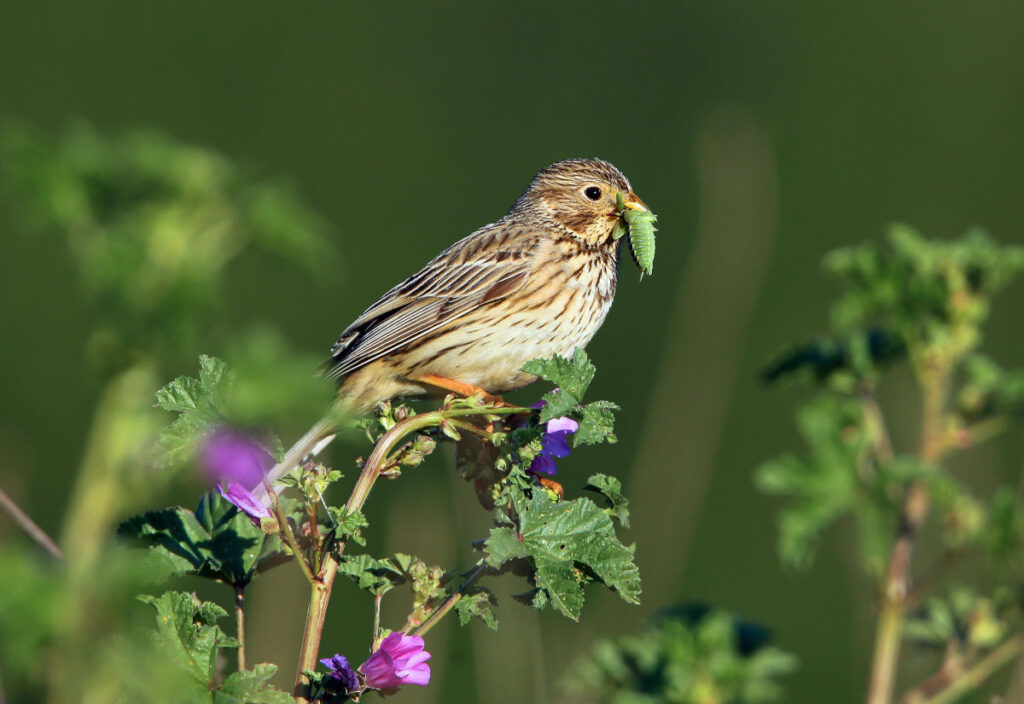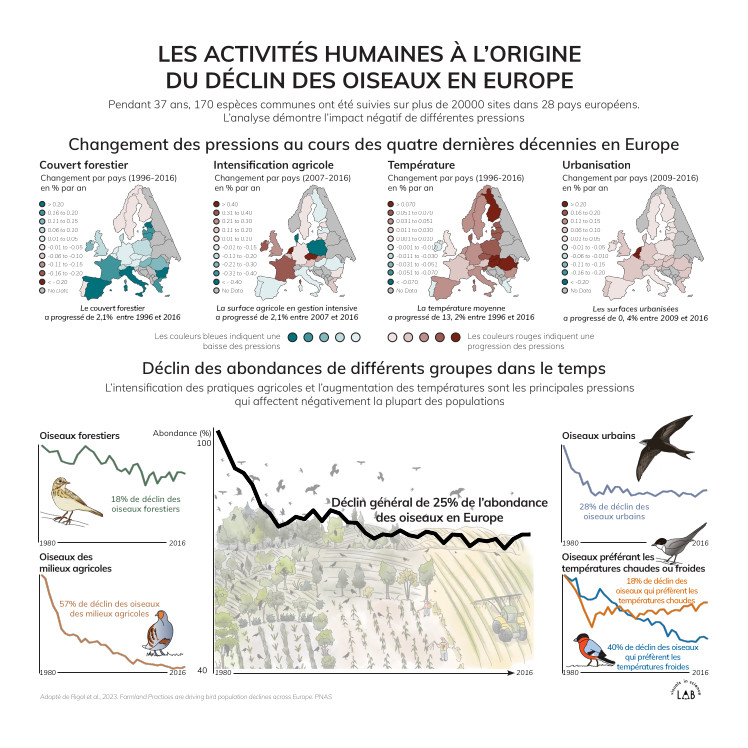The intensification of agriculture is the cause of the disappearance of birds in Europe
A major European scientific collaboration has quantified for the first time the direct impact of various human activities on birds on a continental scale: data collected over almost 40 years show a loss of almost a quarter in bird numbers over this period. More specifically, the study demonstrates the negative and predominant effect of the intensification of agricultural practices. This work, led by two CNRS scientists and a doctoral student from the University of Montpellier, involved researchers from the French National Museum of Natural History and a number of European countries. They are published in PNAS the week of May 15, 2023.

Around 20 million. That's the average number of birds that have disappeared from one year to the next in Europe over the last 40 years. That's 800 million fewer birds since 1980. These figures have just been established thanks to a European team which, in a single study, demonstrated the dominant responsibility of changes in agricultural practices.
The scientists compared several pressures linked to human activity: changes in temperature, urbanization, forest area and agricultural practices. They were thus able to quantify and prioritize their impact on bird populations for the first time, by compiling the most comprehensive dataset ever assembled: 37 years of data from 20,000 ecological monitoring sites in 28 European countries, for 170 different bird species. These data even make it possible to observe in detail the effect of cumulative pressures on the scale of each country, from one year to the next.
While bird populations suffer from this "cocktail" of pressures, research shows that the dominant adverse effect is that of agricultural intensification, i.e. the increase in the amount of fertilizers and pesticides used per hectare. This has led to the decline of many bird populations, and even more so of insectivorous birds. Fertilizers and pesticides can disrupt the balance of an ecosystem's entire food chain.
The other most important pressure is that linked to the global rise in temperatures, which is of course hitting species preferring colder weather the hardest, with a 40% decline, but is not sparing species preferring warmer weather, with an 18% decline. Finally, while bird numbers have plummeted across the continent, some ecosystems have been harder hit than others: while the number of forest birds has fallen by 18%, this figure rises to 28% for urban birds and jumps to 57% for farmland birds.
France is a good mirror of the European situation: it is nevertheless one of the countries with the highest intensively farmed area, but also one of those where this area has recently increased the most. Temperature has also risen by around 1°C between 1996 and 2016, the artificial surface area is higher than the European average, and forest cover is lower than the European average, even though it has increased since 1996. The number of agricultural and forest birds has fallen by 43% and 19% respectively. The number of urban-nesting birds, on the other hand, increased by 9%. Some species have seen their populations drop dramatically: -75% for the common sparrow, meadow sparrow and meadow pipit, for example.
This decline illustrates the impact of human activities on a whole group of species with very different requirements. It is the signature of a profound environmental degradation. More directly, birds are involved in fundamental interactions in ecosystems: predation and regulation of other species, seed dissemination, resources for other predatory species. Their disappearance thus jeopardizes ecosystems as a whole.
This work demonstrates the urgent need to rethink current food production methods. It was supported by the French Office for Biodiversity, and involved scientists from the Montpellier Institute of Evolutionary Sciences (CNRS/IRD/University of Montpellier) and the Centre for Ecology and Conservation Sciences (CNRS/MNHN/Sorbonne University).

- Bird numbers have declined by 25% over the past 40 years on the European continent, and by almost 60% in the case of farmland species.
- Intensive agriculture is the main pressure associated with the decline in bird populations.
- These results come from the largest and most comprehensive study of birds in Europe to date.
Bibliography
Farmland practices are driving bird populations decline across Europe. Rigal, S et al. PNAS, the week of May 15, 2023.